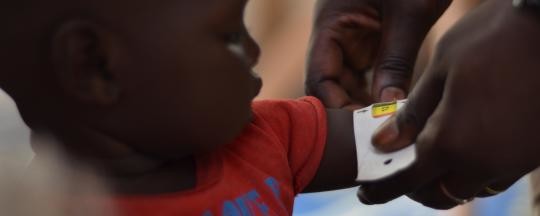Sudanese refugee communities sheltering in northeast South Sudan’s Maban County are suffering from increased malnutrition, but the World Food Programme has notified community leaders that it must further cut rations owing to lack of funding.
“The monthly Mid-Upper-Arm Circumference (MUAC) screenings from Maban camps confirmed the increasing malnutrition trends,” reads an UNHCR Regional Update covering the period 8-12 June.
The Moderate Acute Malnutrition (MAM) rates were: 12.9 per cent of under 5 children in Doro camp; 7.16 per cent in Yusuf Batil; 11.8 per cent in Gendrassa; and 12.2 per cent in Kaya. The Severe Acute Malnutrition (SAM) rates were: 0.7 per cent in Doro camp; 1.08 per cent in Yusuf Batil; 0.9 per cent in Gendrassa; and 2.1 per cent in Kaya.
“However, there is an increasing number of children in the programmes (admission and caseload),” UNHCR reproted.
The humanitarian agency disclosed that the nutrition situation was worsened by the disruption of Targeted Supplementary Feeding Programme in April and May 2015 due to lack of corn soy blends.
Meanwhile, UNHCR and the World Food Programme (WFP) informed refugee leaders Maban’s four camps that they will receive 30 per cent less food rations starting in August 2015 due to funding shortfall.
“Food’s air deliveries have stopped (airlift contract completed), hence prospects for full ration in July 2015 also appear limited.”
Aid workers for ACTED and the Danish Refugee Council (DRC) are currently distributing seeds so that refugees can plant on lands given to them by the South Sudanese host communities in order to help cover the ration gap, according to the humanitarian update.
Radio Tamazuj Photo: child in Upper Nile, South Sudan measured for malnutrition




